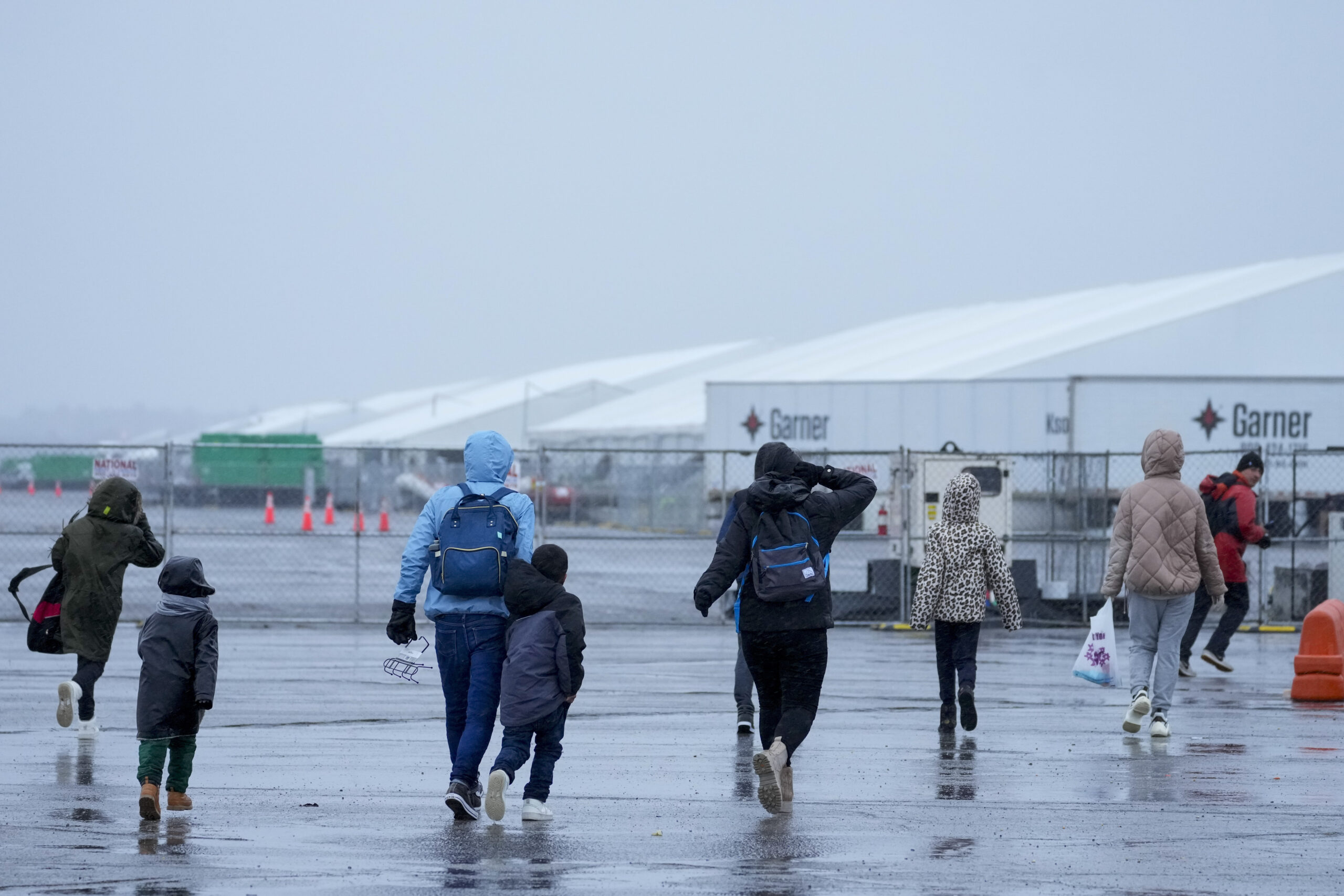New York City built a migrant tent camp on a remote former airfield. Then winter arrived

When New York City officials erected a sprawling tent complex on a remote former airport in Brooklyn to house asylum-seeking migrants this fall, many of the recent arrivals and their advocates questioned the wisdom of placing thousands of people in a flood zone, miles from schools and other services, just as winter set in.
Those worries became reality this week when forecasts of a storm packing drenching rains and punishing winds forced a hasty evacuation Tuesday of the complex built on Floyd Bennett Field’s Runway 19.
Nearly 2,000 people, many of them families with children, were loaded onto city buses just as the storm hit and sent to a nearby high school, prompting school administrators to close the building and switch to remote classes for students the next day.
